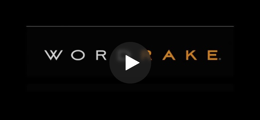Today and each week for the next 12 weeks, the lawyers at WordRake will explore the most ubiquitous form of a law practice—brief-writing: from the ethics to the psychology, to introducing your case, gathering your facts, presenting the facts, building arguments, persuading judges, and proofreading to make your brief the best you can make it in the time you have. We will give you checklists and teach you techniques you can learn only at WordRake from lawyers who have taught tens of thousands of litigators how to win more cases; even how to get that first draft down in 21 minutes. Our goal is to make your professional life easier by helping you understand the whole process at a deeper level—what really moves a judge to say, “Yes.”
Continue readingAdvice to improve your legal writing can sound flippant. How often have you heard “rules” like these?
Continue readingThe memorandum opening below was written by a partner at a big firm. It is filled with examples of two of the three categories of "memo language" we discussed last week. The two paragraphs total 155 words. Start by removing the "obvious" statements and the sentences used to "explain the organization." Then see if you can reduce what remains to about 30 words.
Continue readingLast week, in Part 6 of the WordRake series How to Write the Perfect Memorandum, we explained how to keep clients happy by opening a substantive email with your conclusion and suggested action. In the short installment this week, we show how and why to remove the thick wads of "memo language" that prevent your reader from understanding the situation or knowing what to do about it.
Continue readingLast week, in Part 5 of the WordRake series How to Write the Perfect Memorandum, we looked at the Issue Memorandum, which considers the facts and the law in assessing a client's case. This week, we discuss how to introduce a substantive email to a client.
Continue readingIn Part 4 of the WordRake series How to Write the Perfect Memorandum, we looked at the Advisory Memorandum, the backbone of a transactional practice. This week, we parse the most complex of memoranda—the Issue Memorandum, which assesses the strength of a client's case.
We've now discussed the writing assignment, compared the three primary memoranda, and explained the simplest of the three: the Survey. Today, we look at the memorandum you're more likely write in a transactional practice, the Advisory Memorandum.
We've now discussed how to accept a writing assignment from an assigning lawyer; and we've compared the three primary memoranda an assigning lawyer will ask you to write: the Survey, the Advisory Memorandum, and the Issue Memorandum. Today, we examine the shortest and simplest of the three, the Survey.
Last week, we covered how to accept a writing assignment. Now we look at the three categories of memoranda written to partners.
Continue readingIn this seven-part series, the WordRake legal team explores the three categories of law office memoranda and how to write each to an assigning lawyer. We also reveal the secrets to introducing and streamlining client memoranda for a client’s quick understanding. From receiving the assignment to editing your final draft for brevity and clarity, you will learn how to create and organize memoranda that impress assigning lawyers and satisfy discerning clients.
Continue reading









